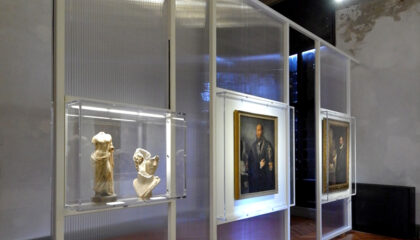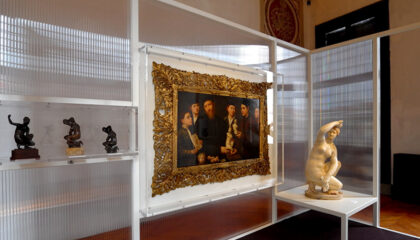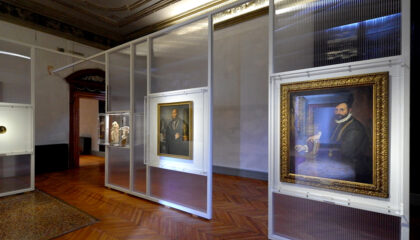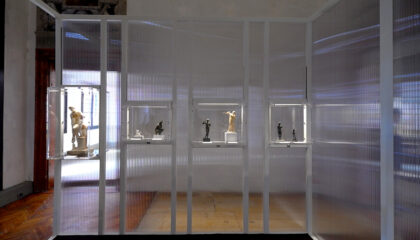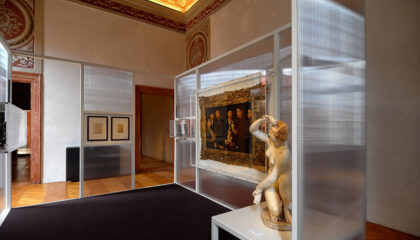Fondazione Prada
Venezia, Italy
2015
The exhibition “Portable Classic” explores the origin and function of miniature reproductions of classical sculptures, featuring over 90 works of varying scale and materials, as well as a selection of portraits of important 16th-century art collectors. The exhibition is on view at the 18th-century Ca’ Corner della Regina, which overlooks the Grand Canal and serves as Fondazione Prada’s Venetian headquarters. The galleries of the palazzo were transformed into Renaissance studioli or small studies, in order to recreate the perspective and concentration dedicated to miniature copies of great classics during the Renaissance.
Curator: Salvatore Settis
Exhibition design: Rem Koolhaas, OMA
The challenge
The elegant refinement of Rem Koolhaas’s project required that the case constructions be characterized by transparency and lightness. The exclusive use of Plexiglas represented a significant challenge because of the precision and technical abilities needed to work with the material and to perfect the opening systems.
The Goppion solution
The exhibition structures differ in form and dimension. The studioli were characterized by a steel tubular structure with polycarbonate reinforcements and Plexiglas cases of varying dimensions with mechanized opening systems.
For the Canon Room Goppion created two long horizontal Plexiglas cases divided into compartments, while a daring structure composed of 11 boxes set on a base of transparent sheets transformed Plexiglas into the typical form of a renaissance structure. The installation was completed with 8 steel bases for the replicas of the Farnese Hercules in various dimensions – six protected by Plexiglas hoods – placed in a long line culminating in a fiberglass cast of the original statue.
Skillful application of the materials used to create the studioli exploited polycarbonate’s ability to transmit the palace’s powerful iconography. At the same time it created an eloquent dialogue with the interior architecture and the transparency and reflective qualities of the acrylic, enhancing the exhibited artworks.
Goppion’s engineering design made a significant contribution to the project. It succeeded in transforming the tubular structures from pure design element to functional component of the installation. It became a support that also concealed the mechanical elements and the electric cables needed to power the lights integrated into the cases.
The successful engineering solution reconciled the formal elegance desired by the designers and the complex technical features demanded by modern conservation requirements. It also met the considerable challenge brought to bear by the particular static structural nature of a historic Venetian palace, with its uneven floors, elastic ceilings and all the problems that go hand in hand with the charms of the lagoon city.
